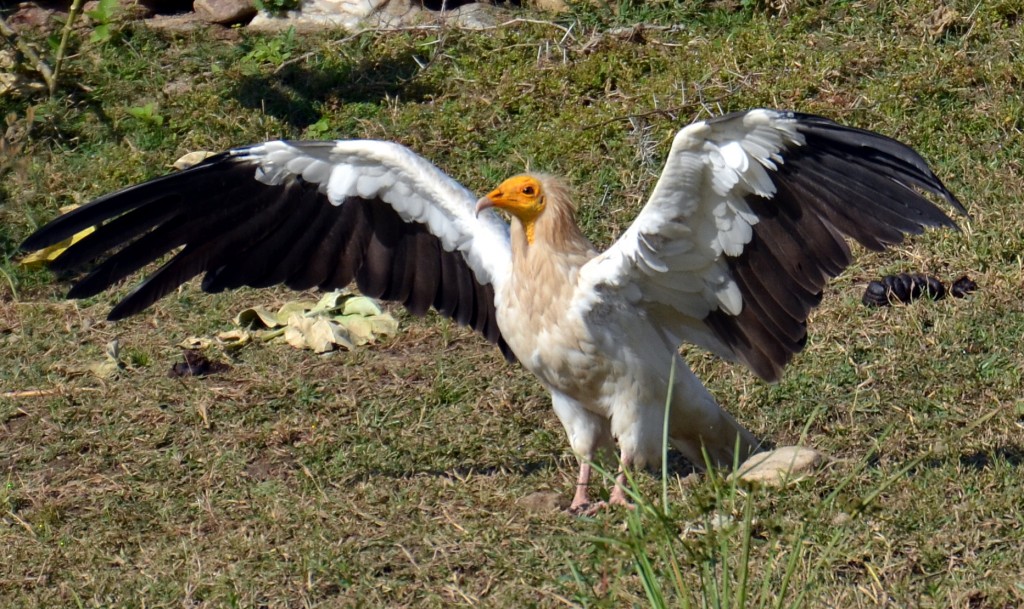Egyptian vulture: Red Data Book of Armenia

Hawks and eagles — Accipitridae
Status. A threatened bird of low numbers. Listed in the IUCN Red List of Threatened Species (ver. 3.1) as Endangered EN A2bcde+3bcde+4bcde. According to IUCN criteria categorized as Endangered EN A2bcde+3bcde+4bcde.
Distribution. The species is distributed from Southern Europe and Africa eastwards to the Tien Shan Mts. and Pakistan.
Distribution in Armenia. Occurs almost everywhere in Armenia.
Habitats. Nestles on high mountain cliffs, preferably in deep rocky canyons, at 800–2000 m above sea level.
Biological traits. Only one egg is laid per annum. Preys in open landscapes (mountain grasslands, semi–deserts, forest grasslands) and in canyons. The staple food items are dead, mostly small and mid–sized, animals, rarely the carrion of large ungulates, mid–sized rodents or predators which can be picked up from roads.
Population size and its trends. The guesstimate is 40–60 breeding pairs. Eight individuals are kept at the Yerevan Zoo and 73 at the EARAZA zoos.
Major threats. The vulture population can be affected by the use of toxic chemicals in agriculture and silviculture, and also by snaring, trapping, killing or lure poisoning. Reduction of prey base is also an imminent threat.
Conservation measures. Ten pairs are known to nestle in Khosrov Forest Reserve, Shikahogh Reserve, Dilijan National Park and Sevan National Park. Listed in Appendix II of the CITES and in Appendix II of the Berne Convention. It is essential to strengthen control over poaching of vultures, make the use of toxic chemicals environmentally friendly, enforce measures against raptor stuffing and sales of stuffed birds, develop and apply the methods of taxidermist licensing, check the ways of dead raptors coming to taxidermists, and to strongly raise public awareness about these issues.
Suggestions
 The Ministry of Environment sent a letter international partners to draw their attention to the real danger of environmental disasters as a result of Azerbaijan's large-scale aggression towards the territory of Armenia
The Ministry of Environment sent a letter international partners to draw their attention to the real danger of environmental disasters as a result of Azerbaijan's large-scale aggression towards the territory of Armenia
 Vicia pisiformis: Red Data Book of Armenia
Vicia pisiformis: Red Data Book of Armenia
 Vavilovia formosa: Red Data Book of Armenia
Vavilovia formosa: Red Data Book of Armenia
 Trigonella capitata: Red Data Book of Armenia
Trigonella capitata: Red Data Book of Armenia
 Trigonella astroides: Red Data Book of Armenia
Trigonella astroides: Red Data Book of Armenia












